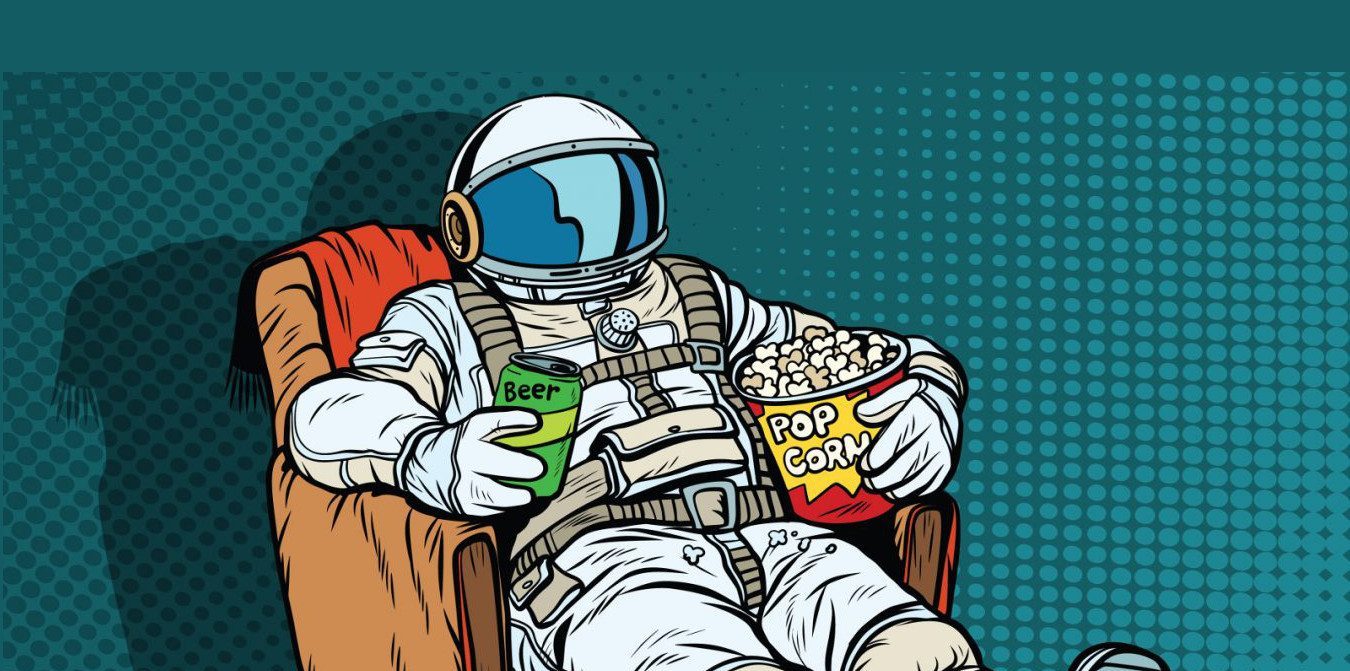
“I’ve always wanted to do a space movie.” ~Danny Boyle
SPACE EXPLORATION
2001: A SPACE ODYSSEY (1968)
It is amazing how this 1960’s movie has not lost its meaning and futuristic power considering it was made during the time of bellbottoms, Vietnam War Tet offensive and Apollo 8 orbiting the Moon. There are so many ideas in this movie that inspired not only countless films but also the way we think of future of technology: Hal the rogue computer, commercial space shuttles, a possibility there is a sentient intelligence up there in space. A movie worth re-watching every decade or so.
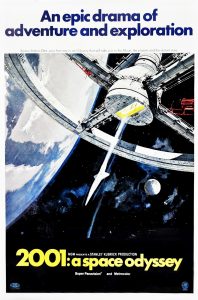
ALTERNATIVE 3 (TV DOCUDRAMA -1977)
An investigative documentary on the disappearance of several hundred British scientists is presented via reenactment by actors. “Alternative 3” refers to a secret moon colonization program by American and Russian scientists and astronauts. There is a more recent documentary Packing for Mars (2017) that deals with the same subject.
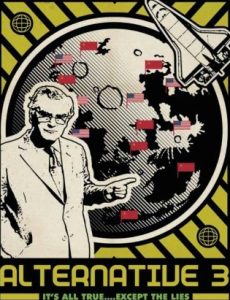
THE RIGHT STUFF (1983)
Based on Tom Wolfe’s novel, the history of US space program starts with Chuck Yeager’s breaking the sound barrier in 1947 and follows first attempts of putting astronauts into orbit. A true story how chaotic were the beginnings of the space explorations –full of happy accidents, unexpected disasters, silly moments and pure heroism.
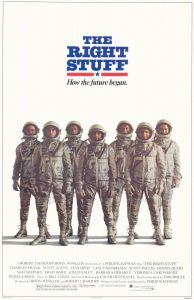
TOTAL RECALL (1990)
Arnold Schwarzenegger is very convincing as a man who pays to get a dream voyage to Mars implanted in his brain, only to discover that he has already been to Mars and that he is really a rebel whose memory is being suppressed. The sci-fi story is based on a Philip K. Dick novella about a future where Mars has already been colonized for mining purposes but the local population has been physically damaged by low oxygen and frequent industrial accidents. There is also a 2012 re-make if you would like more advanced SFX version.
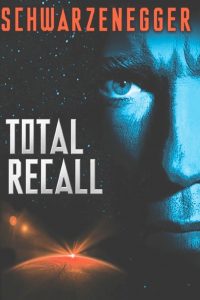
SPACE COWBOYS (2000)
Clint Eastwood, Tommy Lee Jones, Donald Sutherland and James Garner are great as wizened astronauts (basically test pilots on steroids) who save the day when a Russian satellite malfunctions and threatens to fall to Earth. There is of course a lot of government deception and explosions in space but which space movie does not have that?
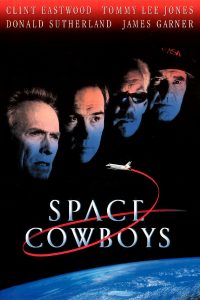
AVATAR (2009)
A paraplegic ex-Marine finds himself on the moon Pandora, pitted against a ruthless military expedition trying to break down resistance of indigenous blue people. Apart from being an awesome visual treat (floating mountains, blue giants, fluorescent plants), it is a tale of space exploration and a classic rapacious quest to mine resources of other peoples.
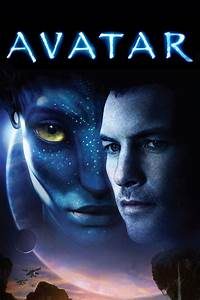
PROMETHEUS (2012)
The movie was directed by Ridley Scott so no wonder he placed the story in the same world and time as his Alien tales. A group of astronauts, sponsored by a commercial exploration company, arrive at a moon in a distant part of the universe. They find an evidence of a civilization, possible the one that seeded humanity on Earth. Things quickly evolve into a survival mode when the remains they explore turn out to be both active and not friendly. A cautionary tale about contamination of Earth with outer space material as well as the consequences of genetic manipulation.
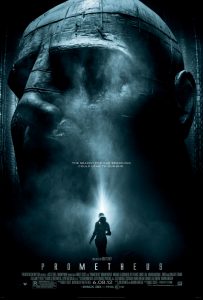
EUROPA REPORT (2013)
An international crew of astronauts departs Earth on a long-term mission to search for life on Europa, a moon of Jupiter’s. Needless to say, an encounter with extraterrestrial life forms does not end up well for the crew. The movie was not a major box office success but science press praised it as “one of the most thrilling and realistic depictions of space exploration.”
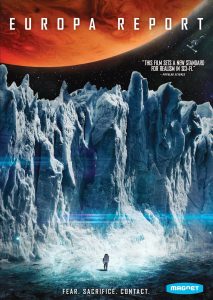
GRAVITY (2013)
A routine spacewalk for two astronauts – a medical engineer (Sandra Bullock) and a veteran astronaut (George Clooney) – ends up in a destruction of the space shuttle and the two of them freefalling into the void. Creating the movie’s realistic space scenes was a major technological challenge and its $100 million the production cost was actually higher than the real Indian Mars Orbiter Mission also known as Mangalyaan which was budgeted at $74 million. Well, art is often more expensive than reality. Also, often turns out to be more rewarding.
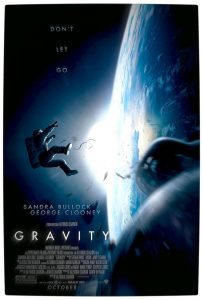
INTERSTELLAR (2014)
Earth’s activity has been reduced to corn farming in dust fields as nothing else will grow anymore. Space exploration has been abandoned by all except one secret program that enables a team of explores to travel through a wormhole in an attempt to save mankind from extinction. A lot of quantum physics and space travel concepts come to life in this movie (black holes, planet explorations, time-space continuum).
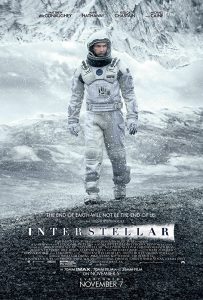
THE MARTIAN (2015)
A mission to Mars ends in a disaster when astronaut Mark Watney is left behind by his crew after being lost in a sandstorm. He must survive with meagre supplies, relying on his scientific ingenuity before any rescue mission can reach him from Earth. A great movie to share with kids to show them science can be useful and fascinating. Also, a good insight into current or almost current space technology (planetary rovers, space shuttles, JPL gadgets etc.)
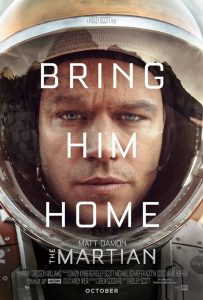
STAR WARS: THE FORCE AWAKENS (2015)
Designed as the first movie in the new Star Wars trilogy, this particular offering from this universe brought out new young cast (Daisy Ridley and John Boyega), appearances from old favorites (Harrison Ford, Mark Hamill and Carrie Fisher) and a classic war movie storyline about resistance fighters waging a guerilla war while searching for their lost leader. Since the 1977 release of the first movie, Star Wars has influenced many aspects of the film industry: special effect and sound technology, digital imagery and editing, sci-fi genres, storytelling techniques, studio franchising, merchandising etc. It has also seminally influenced the way film futurists imagine the development of our technology and social structures.
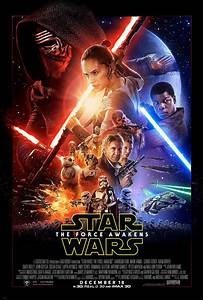
PASSENGERS (2016)
Modern sci-fi movies are good at exploring “what if?“ questions. This one asks what would a man do if he wakes up about a hundred years too early during an interstellar colonization flight. Chris Pratt and Jennifer Lawrence make this dilemma very watchable. A danger of malfunctioning technology in space travel is also very well illustrated here.

HIDDEN FIGURES (2016)
Another movie about history of space exploration. This one deals with preparation for a launch of the first American’s flight in orbit in 1962. The story gains poignancy by the fact that it follows a group of mathematicians, all of them African American women, whose math skills and analytical contributions to the US space program went unrecognized for decades. A good reminder that both technology and social life has changed – NASA of the 1950’s is a place where bathrooms are segregated, calculations are done by “human computers” on a piece of paper and women are required to wear high heels and dresses to work. How did they manage to get John Glenn into orbit with every math calculation done by hand is a wonder to watch.
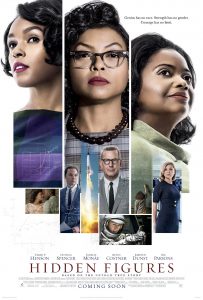
VALERIAN AND THE CITY OF THOUSAND PLANETS (2017)
Luc Besson’s vision of intergalactic adventures, a bit similar to current sci-fi action movies like Guardians of the Galaxy and Star Wars series, but with his own creative point of view. It is also one of the most recent ones and the movie’s release date determines what technology we see on screen. There is plenty of imagery of distant planets, an illustration how entire populations get wiped out by more advanced civilizations, and the way one sentient species can exploit another.
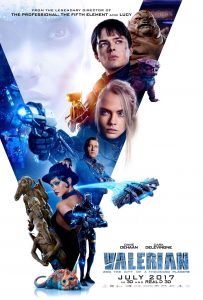
LIFE (2017)
A sample collected on Mars that is brought to an orbital space station for analysis initially looks like a cute live mushroom but soon turns to be lethal. A good reminder that any extraterrestrial lifeform may turn out not be compatible with human life. Star-studded fusion of Gravity and Alien, the movie also explores the ways one should NOT behave in space when encountering aliens. Very detailed and accurate rendition of the International Space Station.
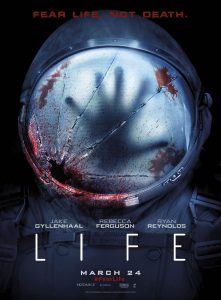
Marooned (1969)
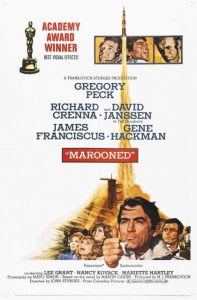
Marooned is a 1969 American film directed by John Sturges and starring Gregory Peck, Richard Crenna, David Janssen, James Franciscus and Gene Hackman about three astronauts who are trapped and slowly suffocating in space.
Solaris (1972)
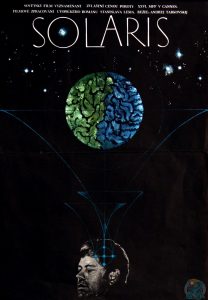
Solaris is a 1972 Soviet science fiction film based on Stanisław Lem’s novel of the same name published in 1961. The film was co-written and directed by Andrei Tarkovsky. The film is a meditative psychological drama occurring mostly aboard a space station orbiting the fictional planet Solaris.
Dark Star (1974)
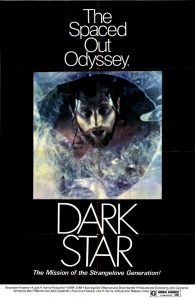
Dark Star is a 1974 American science fiction comedy film directed by John Carpenter and co-written with Dan O’Bannon. It follows the crew of the deteriorating starship “Dark Star”, twenty years into their mission to destroy unstable planets that might threaten future colonization of other planets.
Capricorn One (1977)
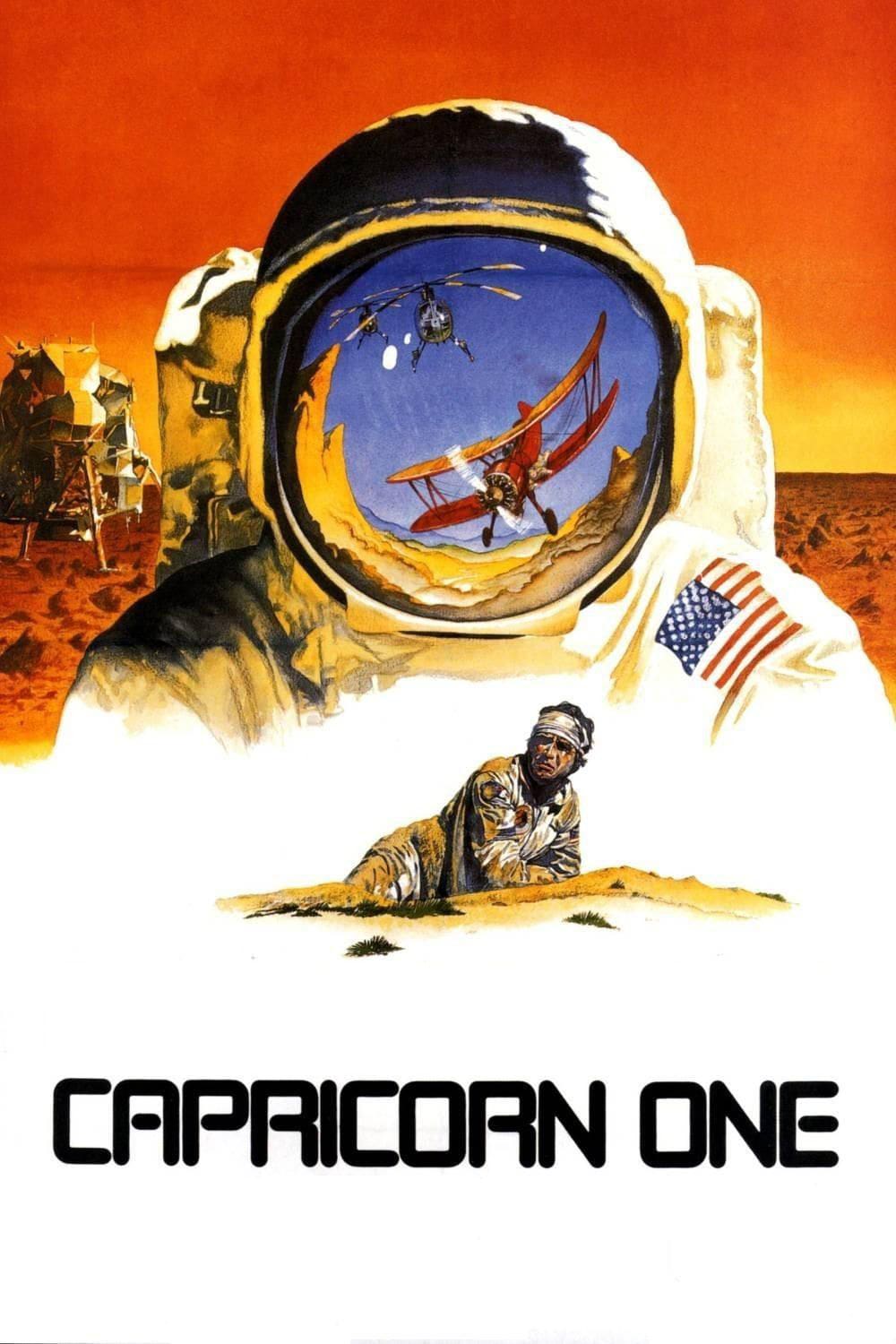
Capricorn One is a 1977 government conspiracy thriller film about a Mars landing hoax.
The Black Hole (1979)
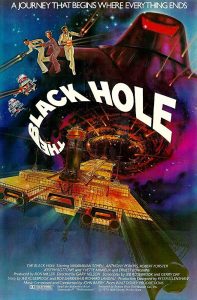
The Black Hole is a 1979 American space opera film directed by Gary Nelson and produced by Walt Disney Productions. The film stars Maximilian Schell, Robert Forster, Joseph Bottoms, Yvette Mimieux, Anthony Perkins, and Ernest Borgnine, while the voices of the main robot characters are provided by Roddy McDowall and Slim Pickens (both uncredited).
Moontrap (1989)
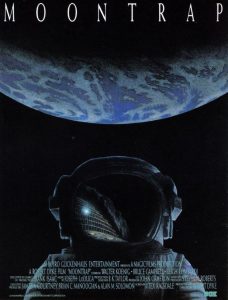
Moontrap is a 1989 science fiction film from Magic Films. Written by Tex Ragsdale and directed by Robert Dyke, it was released on April 28 at WorldFest Houston.
Apollo 13 (1995)
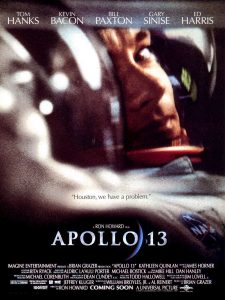
Apollo 13 is a 1995 American space docudrama film directed by Ron Howard and starring Tom Hanks, Kevin Bacon, Bill Paxton, Gary Sinise, and Ed Harris. The screenplay by William Broyles, Jr. and Al Reinert, that dramatizes the aborted 1970 Apollo 13 lunar mission, is an adaptation of the book Lost Moon: The Perilous Voyage of Apollo 13 by astronaut Jim Lovell and Jeffrey Kluger.
Moon (2009)
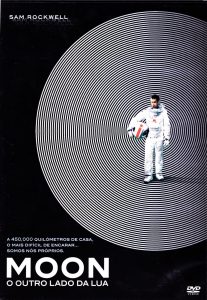
Moon is a 2009 science fiction film co-written and directed by Duncan Jones. The film follows Sam Bell (Sam Rockwell), a man who experiences a personal crisis as he nears the end of a three-year solitary stint mining helium-3 on the far side of the Moon.
Lost In Space series (1965-1968) (1998) and (2018)
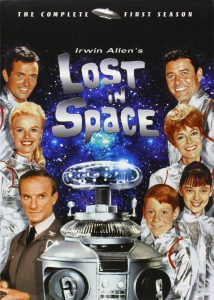
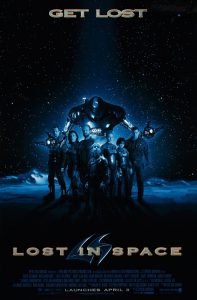
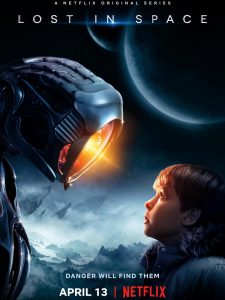
Lost in Space is an American science fiction television series created and produced by Irwin Allen. The series follows the adventures of a pioneering family of space colonists who struggle to survive in a strange and often hostile universe after their ship is sabotaged and thrown off course.
Ender’s Game (2013)
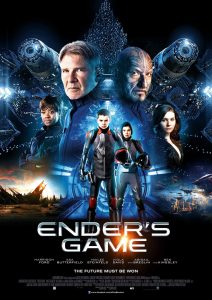
Ender’s Game is a 2013 American military science fiction action film based on the novel of the same name by Orson Scott Card.
Jupiter Ascending (2015)
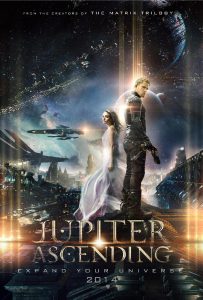
Jupiter Ascending is a 2015 space opera film written, produced and directed by The Wachowskis. Starring Mila Kunis, Channing Tatum, Sean Bean and Eddie Redmayne, the film is centered on Jupiter Jones (Kunis), an ordinary cleaning woman, and Caine Wise (Tatum), an interplanetary warrior who informs Jones that her destiny extends beyond Earth.
Space 1999 (1975-1977)
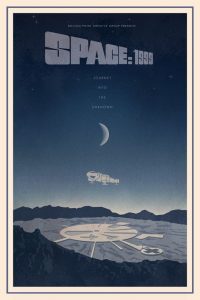
Space: 1999 is a British science-fiction television programme that ran for two series and originally aired from 1975 to 1977. In the opening episode, set in the year 1999, nuclear waste stored on the Moon’s far side explodes, knocking the Moon out of orbit and sending it, as well as the 311 inhabitants of Moonbase Alpha, hurtling uncontrollably into space.
Firefly (2002-2003)
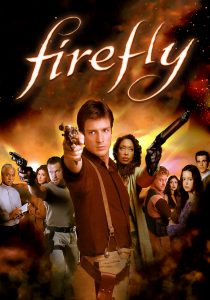
Firefly is an American space Western drama television series which ran from 2002–2003, created by writer and director Joss Whedon, under his Mutant Enemy Productions label. Whedon served as an executive producer, along with Tim Minear. The series is set in the year 2517, after the arrival of humans in a new star system and follows the adventures of the renegade crew of Serenity, a “Firefly-class” spaceship.
Dark Matter (2015-2017)
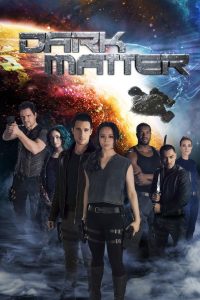
Dark Matter is a Canadian science fiction series created by Joseph Mallozzi and Paul Mullie, based on their comic book of the same name and developed by Prodigy Pictures in association with Space channel.
Dr. NO (1962) – Dr. No tries to stop a launch of a Mercury rocket
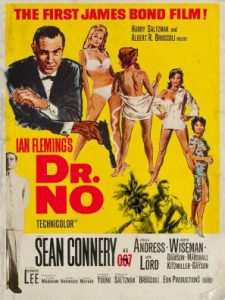
YOU ONLY LIVE TWICE (1969) – An astronaut dies in space (this movie was filmed just before the fatal Apollo 1 fire), US and Russian astronauts get kidnapped
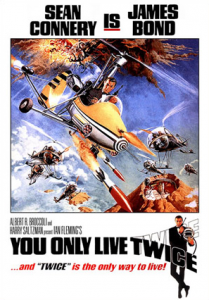
DIAMONDS ARE FORVER (1971) – The villain has a satellite weapon
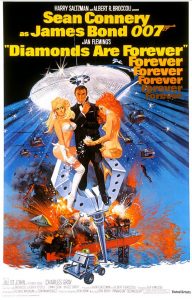
THE MOONRAKER (1979) – A space shuttle is hijacked and Bond travels into space
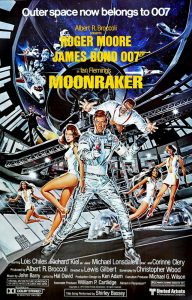
GOLDEN EYE (1995)- Bond has to stop a villain from using a satellite weapon system of electromagnetic pulse
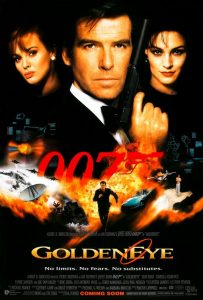
TOMORROW NEVER DIES (1997) –The villain uses satellites to sow discord between China and Britain
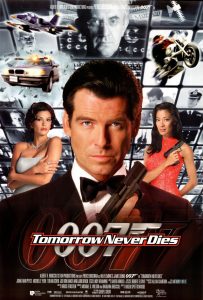
DIE ANOTHER DAY (2002)- An orbital mirror that can focus solar energy can also be used as a massive weapon
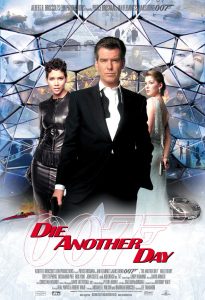
QUANTUM OF SOLACE (2008) – major action scenes at the European Southern Observatory’s Very Large Telescope in Chile.
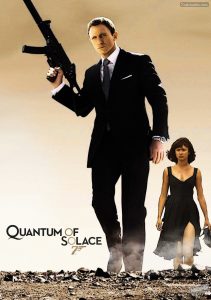
SPECTRE (2015) – Bond battles a global spy alliance group “Nine Eyes” which is a spoof of the real-life “5 Eyes” intelligence gathering alliance of 5 countries
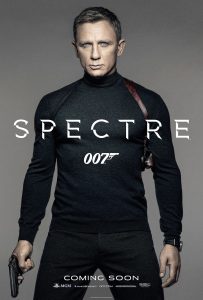
DYSTOPIAS/ MANKIND’S ALTERNATIVE FUTURES
Not exactly movies about distant space travel but these are tales about potential consequences of progress in technology or social engineering.
BLADE RUNNER (1982)
The original Ridley Scott’s classic about artificial intelligence running amok. His vision of the world in the year 2019 has come to pass in many aspects and the movie became a sci-fi classic with many of its ideas copied countless times. Harrison Ford stars as a policeman called Deckard, a hunter of rogue replicants – genetically modified androids created as slave labor – who rebelled against their human masters. To quote the opening credit’s scroll: “Replicants were used Off-world as slave labor, in the hazardous exploration and colonization of other planets.”
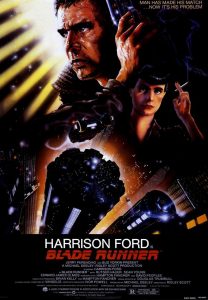
CARGO (2009 – the Swiss movie)
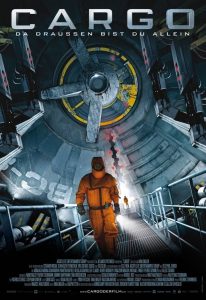
In 2270, Earth is completely ruined and most of the survivors now huddle on dilapidated space stations. The richest people live much better on a faraway planet Rhea and that’s where the story’s protagonist Dr. Laura Portmann is heading to meet with her sister. She soon discovers that she is on ship with a mysterious cargo and that planet Rhea may be more unreachable than she thinks.
ELYSIUM (2013)
One of the best movies about possible a not so distant future. In the year 2154, the wealthy few percent live on a space station in health and luxury whereas the rest of the mankind toils on Earth that looks like one big landfill. Matt Damon plays a man who is trying to save his friends, to find a cure for his ravaged body, and to make Elysium available to more than just a few. The movie was directed by Neil Blomkamp, a South African director who earlier made a genius sci-fi movie District 9. Both movies are biting social commentaries set in a very creative sci-fi environment. In Elysium both the technology of the space station and the ubiquitous robots managing the “colony” of Earth (police, office clerks, transportation) look chillingly differentiated and real.
OBLIVION (2013)
A drone repairman (Tom Cruise) thinks that his shift on a devastated surface of Earth is coming to an end and he can return to his “regular” existence on space station above. A discovery of a crashed spacecraft changes his entire system of beliefs on who he really is, who are the alien Scavs and what really happened in the alien war a while ago. A very chilling doomsday scenario for the future of mankind. Also, cool, sleek production design of this “future world” and a great soundtrack.
EX MACHINA (2014)
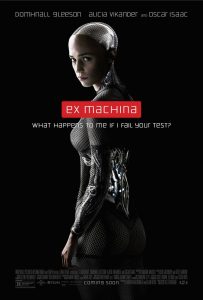
Another take on the future of artificial intelligence research and the consequences of pupils outsmarting their masters.
ARRIVAL (2016)
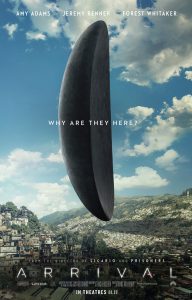
Even though the movie is more of a psychological dilemma rather than sci-fi, there is an interesting problem of linguistic communication with minds different than human. Filmmakers have really analyzed the extent to which other civilizations might be different from what is human – not only the physicality of a different biological system but also the way another civilization might reason, communicate or prioritize values. A very philosophical approach to futurism with all the great acting (Amy Adams) and cool SFX.
3% (TV show-2016)
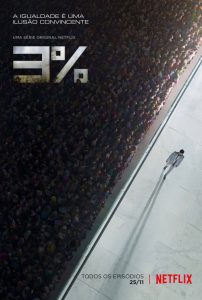
Another prediction about mankind having been clearly split into “haves” and “have nots.” Most of the world population lives in squalor and rags on ravaged Earth. 3% lives on an “Offshore” island with all the technology, abundant fresh food and cures for all ailments. Once a year, Earth’s 20-year-olds go through a selection to be taken up to the Offshore. A combination of Elysium and Hunger Games, this Brazilian TV show (dubbed in English) is a great illustration of a possible outcome of increasing social and technological inequalities.
BLADE RUNNER 2049 (2017)
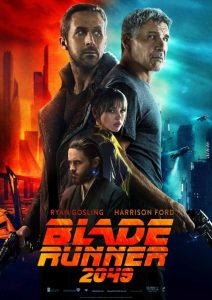
This sequel reprises some characters and develops the same world of the original Blade Runner further into the future. Most of mankind has moved “off-world” to some greener colonies because Earth has become mostly uninhabitable after some ecological disaster. A new hunter of replicants is actually an advanced android himself. His quest is a pursuit of a possibility that he might actually be a human after all.
GEOSTORM (2017)
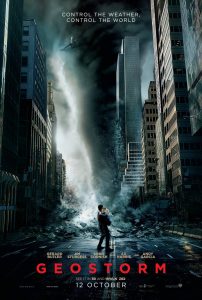
Despite some hokey acting and some overreaching science, it is an entertaining yarn about future when Earth’s volatile weather has been tamed by a net of satellites launched from the ISS (International Space Station). This being an action disaster movie, the satellites soon malfunction, creating mega weather events but it is an interesting vision of shuttles being as common as buses, the Earth being completely covered be a satellite net and all global weather events being under control of one group.
THE 100 (TV show 2014)
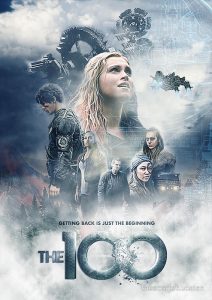
Sometimes space stations do not turn out to be such safe havens. In this TV show, one hundred young people from a dying space station are sent back to Earth 97 years after a nuclear explosion to test if the planet can be repopulated again. The station they are leaving is overpopulated, run like a totalitarian state that culls the unwanted people like cattle, short on supplies and with faltering hardware. The Earth they are heading for is an ecological mystery. Good premise to start imagining.
The Fifth Element (1998)
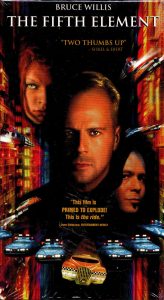
The Fifth Element is a 1997 French science-fiction action film directed and co-written by Luc Besson. It stars Bruce Willis, Gary Oldman and Milla Jovovich. Primarily set in the 23rd century, the film’s central plot involves the survival of planet Earth, which becomes the responsibility of Korben Dallas (Willis), a taxicab driver and former special forces major, after a young woman (Jovovich) falls into his cab.
District 9 (2009)

District 9 is a 2009 science fiction action horror film directed by Neill Blomkamp, written by Blomkamp and Terri Tatchell, and produced by Peter Jackson and Carolynne Cunningham. It is a co-production of New Zealand, the United States, and South Africa. The film stars Sharlto Copley, Jason Cope, and David James, and was adapted from Blomkamp’s 2006 short film Alive in Joburg.
TERMINATOR (3 movies: 1984,1991,2003) – rebellion of AI against humans
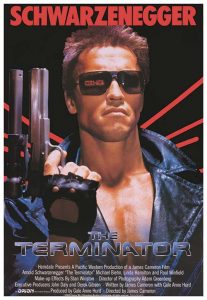
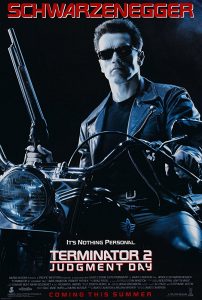
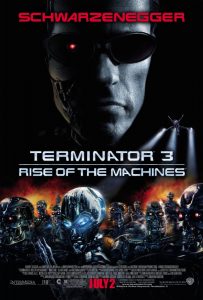
GHOST IN THE SHELL (2017) – androids with human brain inside
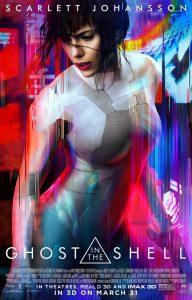
WESTWORLD (TV show 2016-) – androids used for entertainment
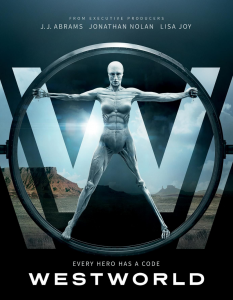
MINORITY REPORT (2002) – travel back in time has consequences
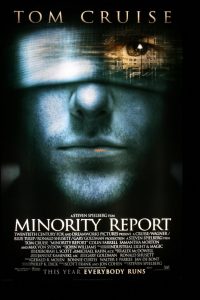
ALIEN WARFARE AND ENCOUNTERS, NONHUMAN CIVILIZATIONS
CLOSE ENCOUNTERS OF THE THIRD KIND (1977)
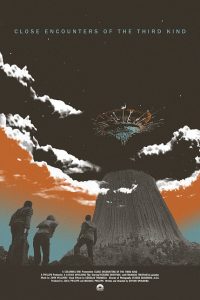
It was the first modern (and believable) imagining of an encounter of civilizations in movies. Richard Dreyfus stars as a modern-day Everyman on an odyssey to meet messengers from another planet. Director Steven Spielberg was at the height of his creative power when he breathed life into his vision of mankind’s ultimate adventure. There are great special-effects, a timeless message of peace and cooperation, and a race against a military conspiracy.
THEY LIVE (1988)
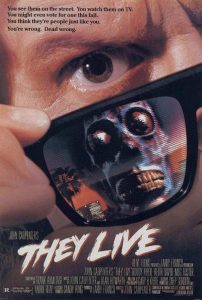
John Carpenter’s classic horror is most famous for its concept of aliens who live undetected among humans, only accidentally revealed to the protagonist through special glasses. Aliens travel off-Earth through a space elevator.
ALIEN series, especially the original ALIEN (1979) and ALIEN COVENANT (2017)
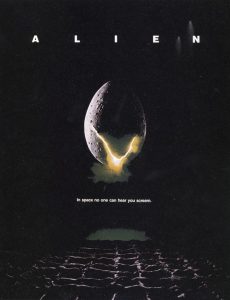
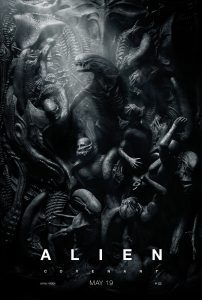
What Star Wars is to any sci-fi movies about intergalactic travel and warfare, the Alien movies are to the way people imagine alien monsters. H.R. Geiger’s creation of the slimy, big-toothed and sinewy alien by now has permanently embedded itself in human collective consciousness, as if it was a real common species like a shark or a Komodo dragon. Alien movies are also rich in other ideas to consider in space exploration. One is a threat of human contamination with extraterrestrial material, another is the issue of inherent risk of any off-planet travel.
INDEPENDENCE DAY (1996)
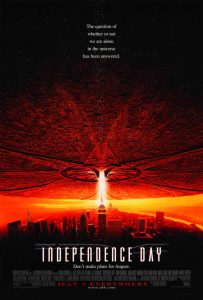
Will Smith wakes up to an alien ship the size of a mountain range landing behind his house in Los Angeles. Things go wild from there. Jeff Goldblum has to get to the White House in time to tell the President how to disable an alien ship, Area 51 turns out to be everything we thought it was, and Smith says “Welcome to Earth” after slugging a slimy ET. This is how disaster movies should be made, and usually aren’t. There is a lot of creative imagining there – how the alien creatures could look, what actually goes on in Area 51 or any other secret government facility, what kind of rocket technology might be used.
CONTACT (1997)
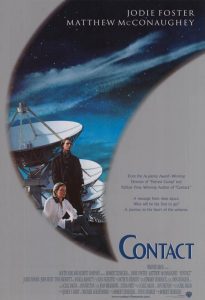
Jodie Foster as an astronomer seeking contact with extraterrestrial intelligence via SETI-like program. Her scientific approach is on a collision course with a famous pastor’s search for truth in religion. Their beliefs get upended when a message from deep space provides a blueprint for a machine that enables contact the other civilization. A very intelligent story (based on Carl Sagan’s novel) in which for once aliens are not horrifying creatures but a higher intelligence that wants to communicate rather than to destroy.
MEN IN BLACK (1997)
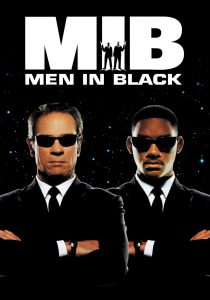
Although this is an action comedy with two badass protagonists (Tommy Lee Joes and Will Smith in cool signature sunglasses), there is an array of alien lifeforms and sci-fi concepts to fertilize sci-fi imagination for years to come. Fun to watch, interesting sci-fi ideas. The movie proved so popular, it was followed by two sequels in the 2000’s.
STARSHIP TROOPERS (1997)
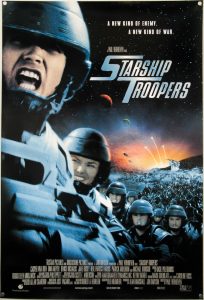
Dutch director Paul Verhoeven created this vision of the future battle between humans living in a fascist, military society and bug-like aliens. Based on Robert A. Heinlein sci-fi novel.
TAKEN (2002, 1 season)
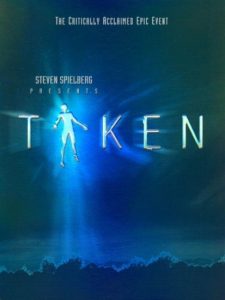
Produced by Steven Spielberg, the miniseries spans four generations in the life of several families. A WWII soldier was abducted by aliens during the war; the Roswell incident transforms another man from an Air Force captain into an evil conspirator; another woman is impregnated by an alien visitor. As the decades go by, the heirs of each of these people are affected by alien’s plans and manipulation
WAR OF THE WORLDS (2005)
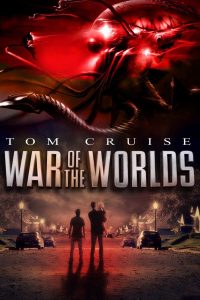
Based on H.G. Wells novel from 1897, the story has been brilliantly updated in Steven Spielberg’s version replete with the latest CGI renditions of giant alien war machines, scenes of mass destruction and a commentary on a fragility of human existence.
INDEPENDENCE DAY 2 – RESURGENCE (2016)
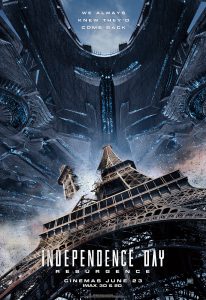
The sequel was unfortunately mainly a rehashing the good stuff with bigger SFX but the technology of making movies and real science have both progressed since 1990’s so it is worth seeing for that reason.
EDGE OF TOMORROW (2014)
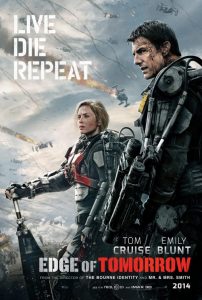
The story is driven by a seductive concept of a time loop. The hero keeps waking up, getting attacked, killed and starting the day again with the same day repeated ad infinitum. The protagonist (Tom Cruise) soon learns that he is a soldier, or more accurately, a weapon, in the battle with invading aliens that has ended badly for the humanity… unless he can replay the game once again.
THE 5th WAVE (2016)
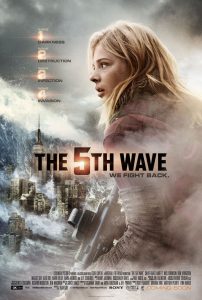
This is based on young adult novels but it illustrates various general sci-fi concepts. A girl has to save her kid brother after four waves of alien attacks have already ravaged most of the Earth.
BATTLESTAR GALACTICA (TV SHOW, 2004-2009)
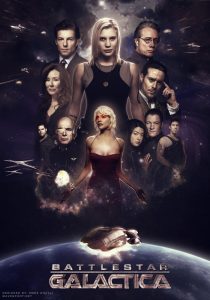
The crew of a battle ship Galactica protect a small fleet of humans escaping the Cyclons, robots who rebelled and who have already destroyed all other human colonies. Galactica journeys towards the last colony – the Earth. A good look at balances of power, governmental decisions, fractions, models of social structure – all of it dressed with sci-fi cool look. Lots of sex, treason, and revenge.
Invasion of the Body Snatchers (1978)
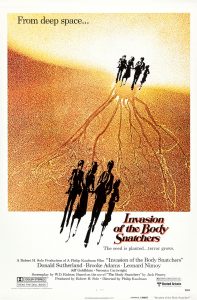
Invasion of the Body Snatchers is a 1978 American science fiction horror film[3] directed by Philip Kaufman, and starring Donald Sutherland, Brooke Adams, Veronica Cartwright, Jeff Goldblum and Leonard Nimoy.
Dark Skies (1996-1997)
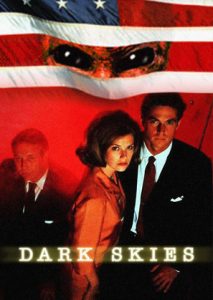
Dark Skies is an American UFO conspiracy theory–based sci-fi television series (1996–97).

I would add Alien Resurrection to the list. Our heroine awakens Centuies after her death to find she has been cloned . To her shock and dismay she is now the Mother Goddess/ Queen of the Aliens.
Yikes!